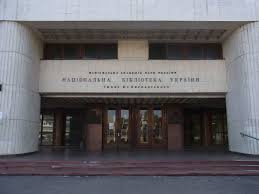
Introduction
Kiev, the capital of Ukraine, holds a central place in Eastern Europe both historically and politically. Known for its lush greenery and stunning architecture, this city is not just a cultural hub but also a symbol of resilience, especially amidst the ongoing geopolitical tensions in the region. Understanding Kiev’s significance is vital for grasping the complexities surrounding Ukraine’s past and future.
Historical Background
With a rich history that dates back over 1,400 years, Kiev was a focal point of the East Slavic civilization and played a significant role in the rise of the Kievan Rus, the first East Slavic state. Landmarks such as Saint Sophia’s Cathedral and the Kyiv Pechersk Lavra showcase its Byzantine heritage. However, Kiev has endured many hardships, including invasions, wars, and most recently, the impact of the Russian-Ukraine conflict that escalated in 2014 and intensified in 2022.
Current Events and Developments
Recently, Kiev has been in the international spotlight due to the ongoing conflict following Russia’s full-scale invasion of Ukraine. As of October 2023, Ukraine continues to defend its sovereignty, managing to maintain a sense of normalcy within the capital. Daily life in Kiev has adapted, with many residents balancing their routines alongside air raid sirens and the uncertainty of military operations.
In response to the war, international aid has poured into the city, supporting both humanitarian efforts and military defense. The Ukrainian government, alongside international partners, has pledged to rebuild and restore the city as a symbol of hope and recovery. In this regard, infrastructural projects are underway, with new initiatives promoting economic resilience and cultural restoration.
Cultural Significance
Kiev is not only pivotal geographically; it’s also a cultural melting pot. The city hosts numerous festivals, theaters, and museums, reflecting its diverse heritage. The streets of Kiev are filled with vibrant street art, cafes, and markets that offer local crafts. The ongoing resilience of the people of Kiev, despite the surrounding turmoil, showcases their unwavering spirit and rich cultural identity.
Conclusion
Kiev serves as a crucial player in the geopolitical landscape of Eastern Europe, and its significance is heightened in the context of the ongoing conflict. The city’s historical depth, combined with its contemporary challenges and cultural vibrancy, make Kiev an important area to monitor. As the situation evolves, so will Kiev’s role as a symbol of resilience and hope for Ukraine and its people.



